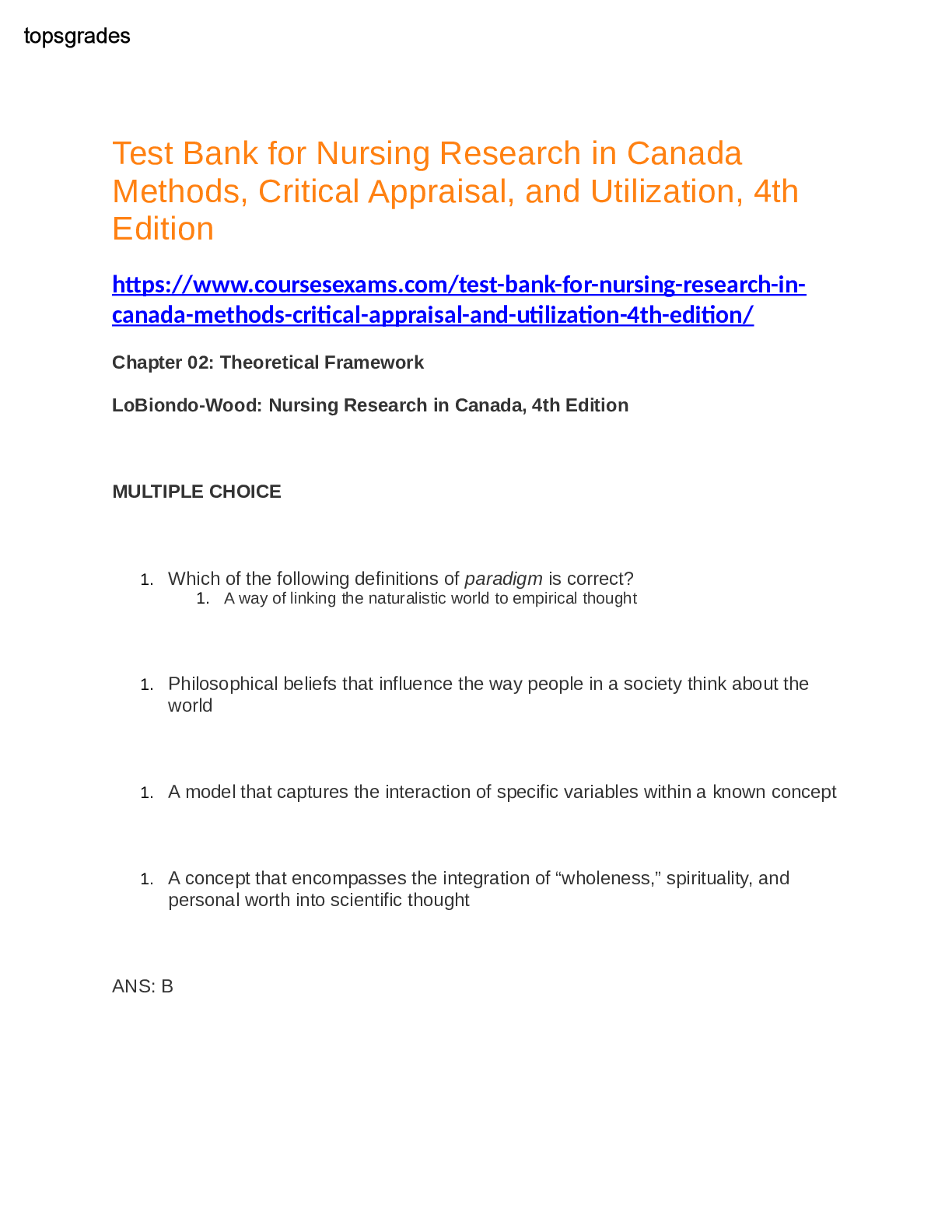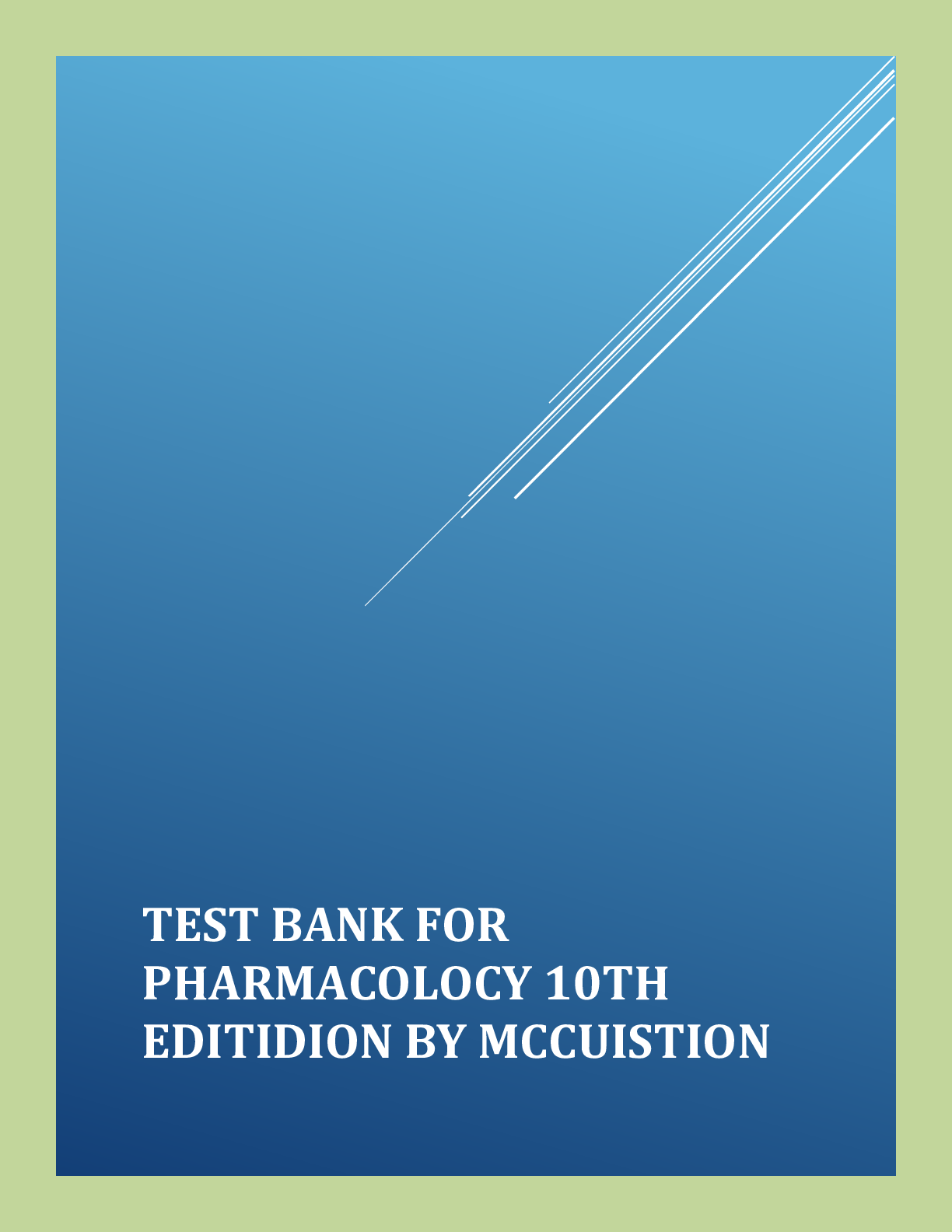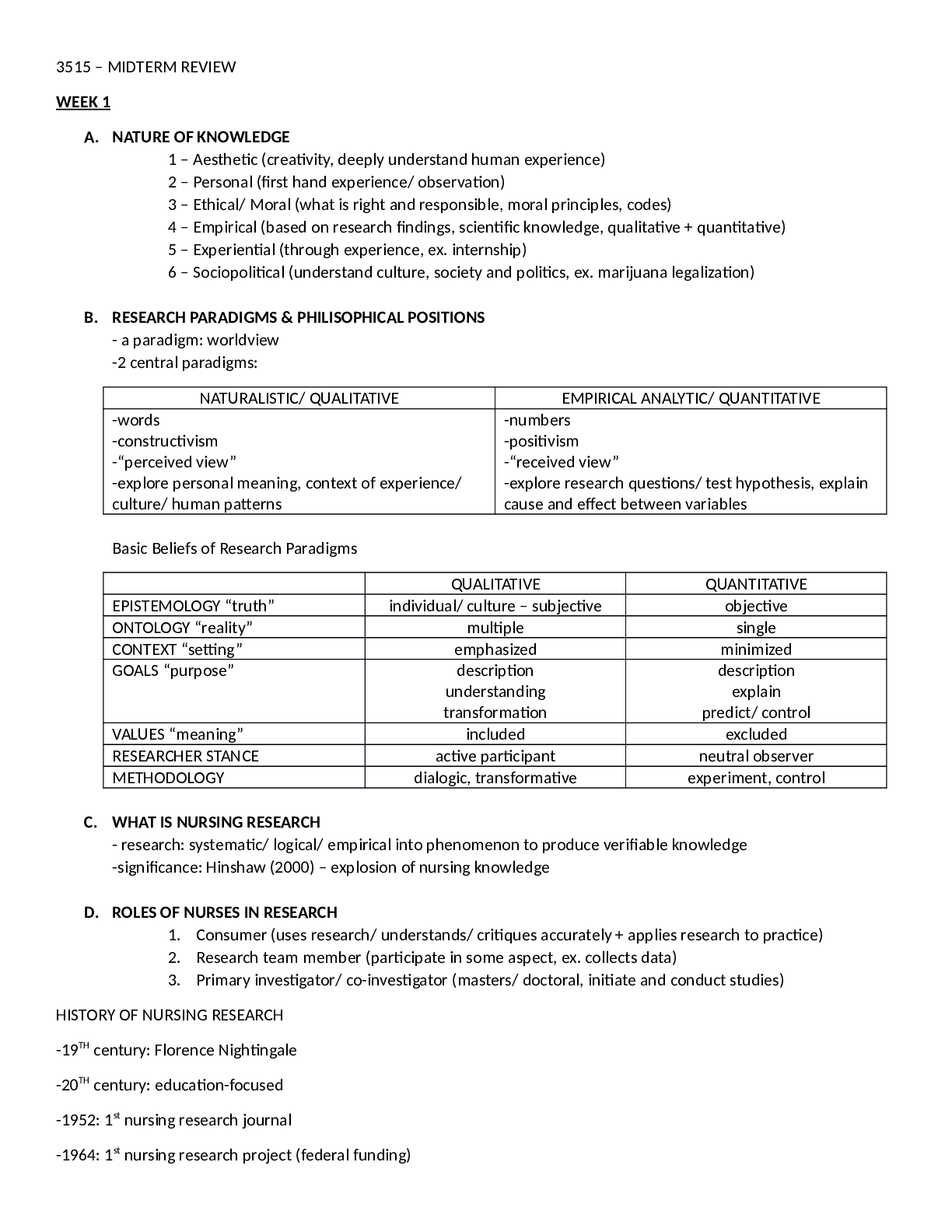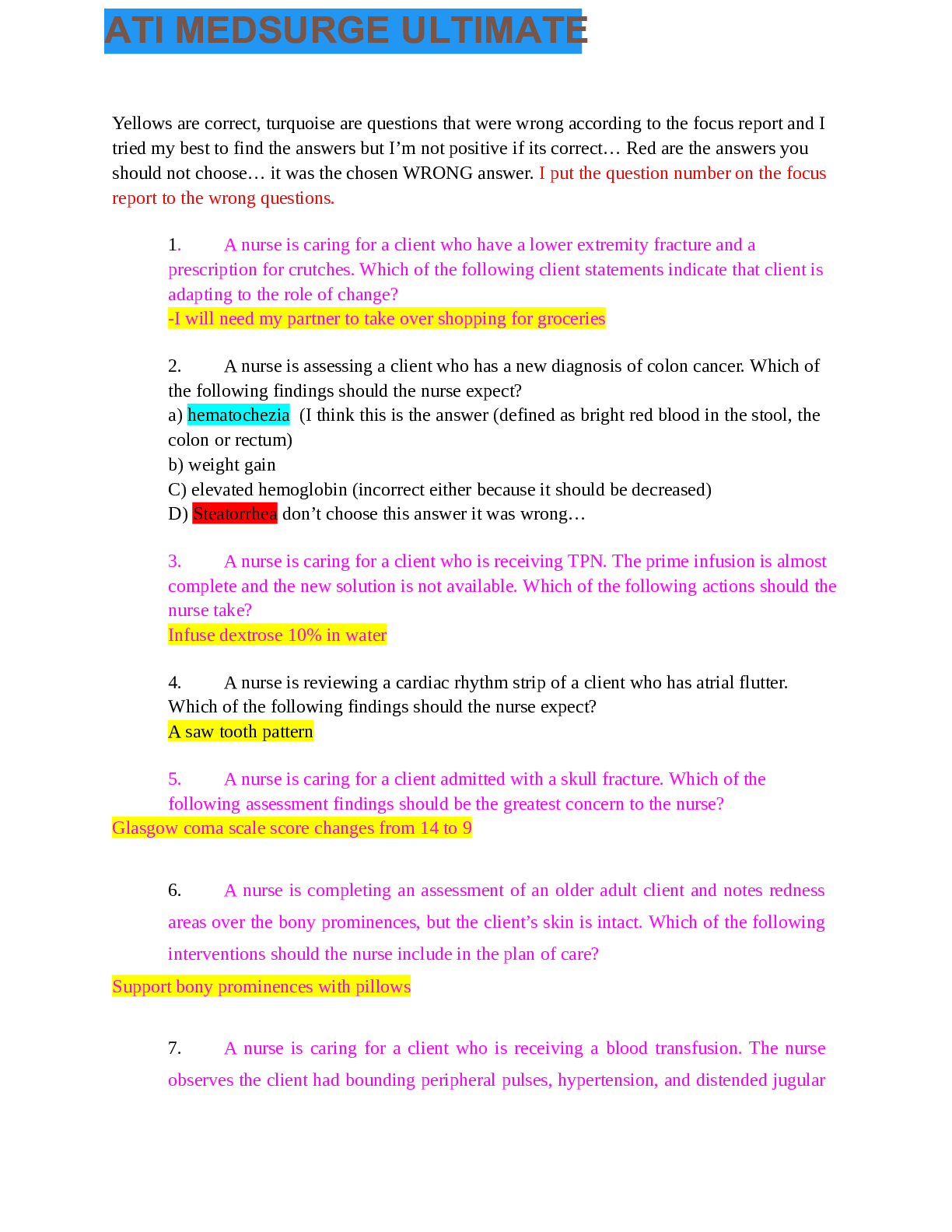*NURSING > AQA Questions and Marking Scheme > HESI FUNDAMENTALS PROCTORED EXAM 2023 LATEST (All)
HESI FUNDAMENTALS PROCTORED EXAM 2023 LATEST
Document Content and Description Below
1. The nurse is admitting an older patient from a nursing home. During the assessment, the nurse notes a shallow open reddish, pink ulcer without slough on the right heel of the patient. How will th... e nurse stage this pressure ulcer? a. Stage I b. Stage II c. Stage III d. Stage IV ANS: B This would be a Stage II pressure ulcer because it presents as partial-thicknessskin loss involving epidermis and dermis. The ulcer presents clinically as an abrasion, blister, or shallow crater. Stage I is intact skin with nonblanchable redness over a bony prominence. With a Stage III pressure ulcer, subcutaneousfat may be visible, but bone, tendon, and muscles are not exposed. Stage IV involves full-thickness tissue loss with exposed bone, tendon, or muscle. 2. The nurse is completing a skin assessment on a patient with darkly pigmented skin. Which item should the nurse use first to assist in staging anulcer on this patient? a. Disposable measuring tape b. Cotton-tipped applicator c. Sterile gloves d. Halogen light ANS: D When assessing a patient with darkly pigmented skin, proper lighting is essentialto accurately complete the first step in assessment—inspection—and the entire assessment process. Natural light or a halogen light is recommended. Fluorescentlight sources can produce blue tones on A+ 184 darkly pigmented skin and can interfere with an accurate assessment. Other items that could possibly be used during the A+ 185 assessment include gloves for A+ infection control, a disposable measuring device to measure the size ofthe wound, and a cotton-tipped applicator to measure the depth of the wound, but these items are not the first items used. 3. The nurse is caring for a patient with a Stage IV pressure ulcer. Which type of healing will the nurse consider when planning care forthis patient? a. Partial-thickness wound repair b. Full-thickness wound repair c. Primary intention d. Tertiary intention ANS: B Stage IV pressure ulcers are full-thickness wounds that extend into the dermis and heal by scar formation because the deeper structures do not regenerate, hence the need for fullthickness repair. The full-thickness repair has four phases: hemostasis, inflammatory, proliferative, and maturation. A wound heals by primary intention when wounds such as surgical wounds have little tissue loss; the skin edges are approximated or closed, and the risk for infectionis low. Partial-thickness repairs are done on partial-thickness wounds that are shallow, involving loss of the epidermis and maybe partial loss of the dermis. These wounds heal by regenerati [Show More]
Last updated: 1 year ago
Preview 1 out of 15 pages
Instant download
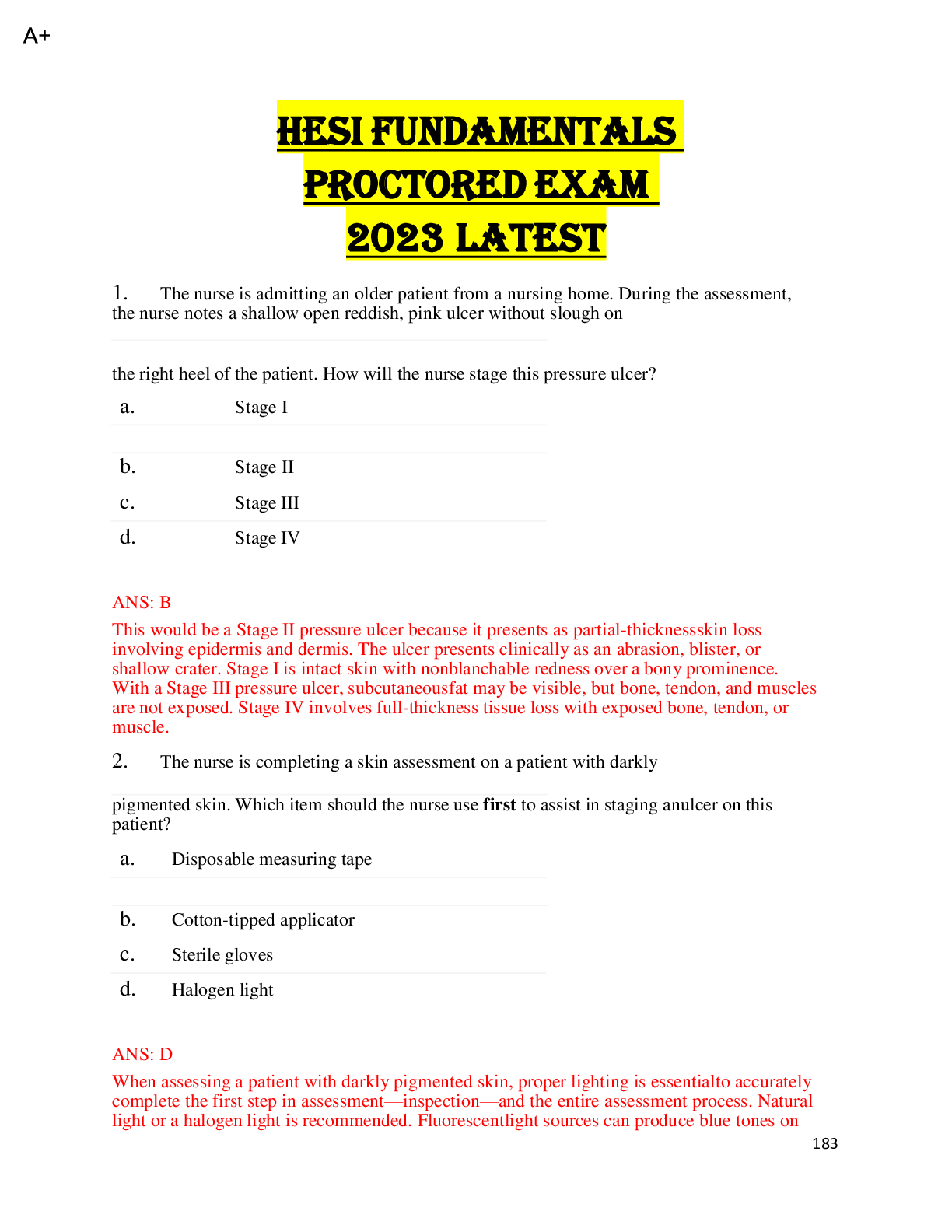
Buy this document to get the full access instantly
Instant Download Access after purchase
Add to cartInstant download
Reviews( 0 )
Document information
Connected school, study & course
About the document
Uploaded On
Apr 03, 2023
Number of pages
15
Written in
Additional information
This document has been written for:
Uploaded
Apr 03, 2023
Downloads
0
Views
32


